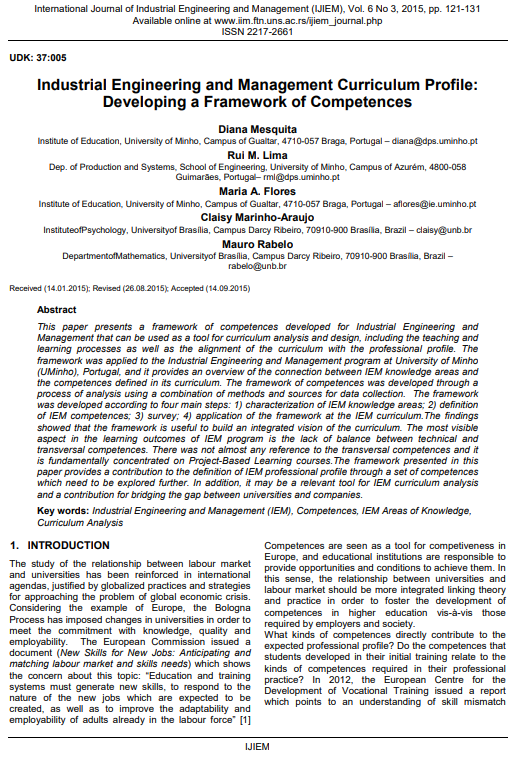Industrial Engineering and Management Curriculum Profile: Developing a Framework of Competences

Published 2015-09-30
abstract views: 286 // FULL TEXT ARTICLE (PDF): 0
Keywords
- Industrial Engineering and Management (IEM),
- Competences,
- IEM Areas of Knowledge,
- Curriculum Analysis
How to Cite
Copyright (c) 2023 International Journal of Industrial Engineering and Management

This work is licensed under a Creative Commons Attribution 4.0 International License.
Abstract
This paper presents a framework of competences developed for Industrial Engineering and Management that can be used as a tool for curriculum analysis and design, including the teaching and learning processes as well as the alignment of the curriculum with the professional profile. The framework was applied to the Industrial Engineering and Management program at University of Minho (UMinho), Portugal, and it provides an overview of the connection between IEM knowledge areas and the competences defined in its curriculum. The framework of competences was developed through a process of analysis using a combination of methods and sources for data collection. The framework was developed according to four main steps: 1) characterization of IEM knowledge areas; 2) definition of IEM competences; 3) survey; 4) application of the framework at the IEM curriculum.The findings showed that the framework is useful to build an integrated vision of the curriculum. The most visible aspect in the learning outcomes of IEM program is the lack of balance between technical and transversal competences. There was not almost any reference to the transversal competences and it is fundamentally concentrated on Project-Based Learning courses.The framework presented in this paper provides a contribution to the definition of IEM professional profile through a set of competences which need to be explored further. In addition, it may be a relevant tool for IEM curriculum analysis and a contribution for bridging the gap between universities and companies.
Article history: Received (14.01.2015); Revised (26.08.2015); Accepted (14.09.2015)

